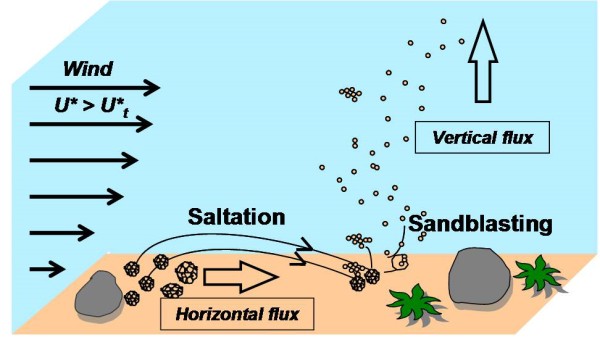Modeling of dust emissions
The emission model developed at LISA makes reference today to an international level. It describes the main process of desert aerosols: the threshold of erosion, the saltation and sandblasting [Marticorena and Bergametti, 1995; Marticorena et al., 1997; Alfaro and Gomes, 2001]. The model describes the dependence of the thresholds of erosion to the eroded soil size distribution, but also the increase in thresholds linked to the presence of roughness (stones or vegetation) which absorb a fraction of wind energy [Alfaro and Gomes, 1995; Marticorena and Bergametti, 1995], and the humidity of the soil [Fecan et al., 1999]. Horizontal flow is calculated in function of wind speed and the ground size distribution, as observed in situ, for the fraction of surface not covered by the elements of roughness. The model also includes a modeling of the sandblasting, based on a balance between the kinetic energy by saltation of soil grains and energy of cohesion of fine particles [Alfaro and Gomes, 2001; Alfaro et al. 2007]. The representation of these processes can simulate the produced aerosol size distribution and its evolution based on dynamic conditions. In recent years, particular attention has been brought to the developments of parameterizations adapted to agricultural surfaces [Kardous et al, 2005, b] and non-homogeneous vegetated surfaces [Bowker et al 2007].
 |
Schema representing the key processes for the production of desert aerosols

